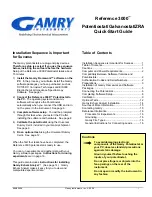
15
|
www.lakeshore.com
The DC level is the rolling average field measured over the averaging window period
(see section 3.4.2). The instrument subtracts this DC level from the RMS measure-
ment, meaning the RMS measurement only includes the AC component of the field.
For best results, select an averaging window 10 times the period of the field mea-
sured. This ensures stable DC values and accurate AC values.
For example:
A 50 Hz signal has a 20 ms period. So the averaging window should be no less than
200 ms. Longer averaging windows will work even better.
Slow AC signals need a very long averaging window in AC mode. In these cases, DC
mode with a short averaging window may work better. Buffered data streaming
(see section 3.5.3) allows for a sample rate up to 100 Hz (10 ms averaging window) in
DC mode. RMS and peak values can then be calculated using the collected data.
For example:
In AC mode, a 1 Hz signal requires a 10 s averaging window for accurate measure-
ment. In some applications this may be too slow. Instead, DC mode with an averaging
window of 10 ms will provide 100 samples per signal period.
3.4.1.3 High-Frequency Measurement Mode
High-frequency (HF) mode sacrifices accuracy and the ability to measure DC values to
take measurements as fast as possible. The instrument samples at 200,000 readings
per second in high-frequency mode. However, there are many factors limiting mea-
surement accuracy at high frequencies. See the “High Frequency Measurement”
white paper (coming soon, see
) for a detailed explana-
tion.
High-frequency mode disables signal modulation, allowing the use of the analog out
connection to view the AC waveform in real-time. Connect the analog out to an oscil-
loscope to monitor pulsed or high-frequency fields. See section 2.4.5 for voltage con-
version details.
FIGURE 3-3
Available field measurements in AC mode
DC offset
Crest factor
(peak/RMS)
Peak to
peak
RMS
÷
Time
Field
















































